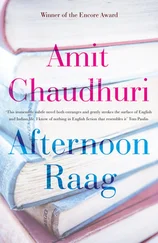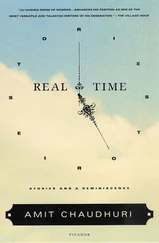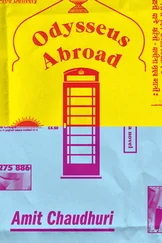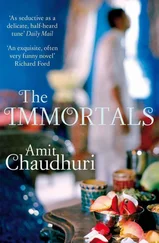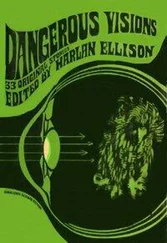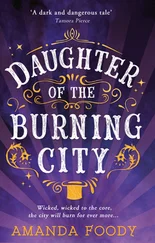At the traffic lights, I saw a deeply familiar figure on the opposite side, sitting, amidst the concourse of motley people any festive day in Calcutta comprises, on the white parapet outside the large window of Flurys, studying me with a mixture of distant empathy and interest. It was my wife, R. She’d abandoned the queue and opted, as she often does, to sit down. She looked at me as if she’d never expected to see me again. I was simply surprised to find her where she was. But the queue had dissolved, and we got into Flurys almost instantly. “Did you notice the woman beside me?” she asked when we were seated. Although I do notice women, I often find that I don’t notice the same kind that R does. She’d been sitting next to a small family on the parapet. Now that she mentioned her, I did recall someone at R’s side—“The person in the green salwaar kameez,” she said exasperatedly — but the colour of the clothing hadn’t registered itself on my mind’s eye. What had imprinted itself there was that she was, for the want of a more delicate expression, someone from a different class background, someone with a very different horizon, someone ordinary and well known and yet, at the same time, little known. All this, as it were, I knew, although I hadn’t noticed the colour of her salwaar kameez. It was she, on seeing that R wanted to sit down, who had invited her to: “There’s space here.” And there was; the parapet distends just there like a swelling lip, and becomes ample. R told me how this woman came here with her family at this time of the year, annually, because the ledge outside Flurys provided her with a view of an incredible stream of life on the 25th. “She spoke to me first in Bengali and then in Hindi,” R said, and this was worth remarking on because, only a generation ago, Bengalis spoke a risible, embarrassing Hindi, and even looked down upon that language. In the last thirty years, not only had Bengal fallen, but so had the once-vaunted Bengali language; and, in the meanwhile, a new kind of Bengali person had come into being and increased in small towns, suburbs, outskirts, and even in the metropolis (which these days felt as if it were on the outskirts of somewhere itself, or like an agglomeration of little towns), in which people watched Hindi films on DVDs, and a daily ration of Hindi reality shows and Bengali soaps. Most of this audience couldn’t but be proficient in Hindi. The woman in the green salwaar kameez was one such Bengali, while R and I had a foot sufficiently planted in a superannuated Bengal for us to find this unselfconscious lapsing into Hindi worth commenting on. Streamers hung from the ceilings of Flurys, as it always does during Christmas. After ordering the menu’s relatively recent “brewed filter coffee” (earlier it was simply “coffee”), I apologised to my wife and said I’d like to step out for ten minutes and speak briefly to the woman she’d been sitting next to. Clearly, I’m not good company these days; R sees me not so much as a person occasionally seized by inspiration or curiosity but by inklings of excitement. Either it has to do with music, or a particular sound, or idea; or, as was the case now, with Christmas and the city. “Go,” she instructed me. “The coffee will take at least fifteen minutes.” Like me, she too was vaguely stirred by the notion of a family sitting outside Flurys on the ledge, looking at the same world that we were from behind the window, but at greater proximity.
So as not to unduly alarm the woman in the green salwaar kameez, I introduced myself as the husband of the person who’d been keeping her company five minutes ago. She was cautious but not hostile; she made room for me in the space R had just vacated. I’d seen faces like hers before — in Northern Spain; in China: a new kind of provincial who populates the globalised world, who changes with its changes without ever travelling outside of the country, even beyond their city or town. This lady, for instance — she lived in Salt Lake, a suburb created in the late seventies not far from the airport, and she’d come here to Park Street to spend the afternoon. She introduced me to her son, a shy boy of seventeen or eighteen, who she said studied at “Something Institution” (I couldn’t catch the name), and to her sister, who resembled her, but was older, less pretty, and seemed to know it. She was waiting, she said with a tremor of humour and anticipation, for her husband to return from the KFC on Middleton Street. The only false note occurred when I asked her what he did; withdrawing a tiny bit, she said, prevaricatingly, “Service.” This could mean any kind of regular employment: an ordinary white-collar job. Anything grander, and she’d have been specific. I felt, again, that I’d seen people like her in other parts of the world, out on a walk, going down a promenade or past some shops, entirely of a locality, a place, but also entirely of the present, the here and now. Sitting next to her, waiting for her husband to return, I thought I could have been, and probably was, anywhere.
* * *
“Could you go and see your bara mamima this evening? She might die any time now.”
So my mother to me, before Christmas Day was over. Those childhood visits — now translated into belated deathbed visits! Never to see bara mamima again — my late maternal uncle Jyoti Prasad Nandi Majumdar’s wife — to allow her to sneak away without so much as a greeting or a sighting!
She lay, that Christmas evening in Golf Green, very still on the divan in the little sitting room in the one-bedroom flat. We’d heard for about a week that she was fading. R and I sat talking with her daughter and sole companion Rini. Golf Green is an odd colony that came up next to waterbodies and wilderness in the mid-seventies, its blocks of apartments divided candidly into “lower income group” and “middle income group,” perfectly capturing the prudent ambitions of a new generation of Bengali homeowners. My aunt, all these years, had been here, in MIG. Childhood flooded back, mainly because of the stillness that I only ever used to encounter in this city in December. The temperature falls to a level that makes the fan unnecessary. And the child in me begins to attend to details — the pinpricks of sound, of voices and televisions in other apartments, for the rest of the year made fuzzy by or mediated through the fan’s shuttling. Even now, I noticed that the decorative peacock feather on top of the fridge was still. That stillness comprises, for me, an inalienable continuity with the child who first observed this world of relatives in Calcutta.
“Have you noticed who’s come?” said Rini didi, as, on our way out, we stood at the door. With an effort bara mamima opened her eyes and nodded — barely.
* * *
A friend visiting from London tells me how he likes the Calcutta Christmas much more than he likes the English one. I do too; but he has specific reasons. And he has no memory of a Calcutta Christmas to refer back to; Calcutta, in effect, has no past for him — he’s only been here once before.
“There’s not much sign of the crucifix here,” he says. “You don’t have that awful mournfulness of Christianity. It’s all about Santa,” he concludes, nodding. He has seen gigantic simulacra of the bearded gift-bearer in shopping malls; in front of restaurants. Although globalisation, in its full-blown form, is yet to reach Bengal, its apparitions, this December, are clearly visible: thus the striking Kumbhakarna-like dimensions of many of the Santa Clauses. “And there aren’t that many nativity scenes,” he says. “In fact, I haven’t seen any.”
He’s right; it’s an absence I hadn’t noticed, perhaps with good reason. In Aparna Sen’s lovely first film, 36 Chowringhee Lane , the director almost forces an analogy when she plays a recording of a tenor singing, stratospherically, “Silent Night” over visuals of destitutes sleeping on bridges and pavements. To find a representation of the nativity, one might need to go to a church; but, on the whole, the miraculous birth is unremarked upon. The predominant atmosphere of Christmas here has never been one of solitary stocktaking or of the notion of the return of God to earth, but of make-believe.
Читать дальше

